Axonal remyelination by cord blood stem cells after spinal cord injury
- PMID: 17376002
- PMCID: PMC1859845
- DOI: 10.1089/neu.2006.0142
Axonal remyelination by cord blood stem cells after spinal cord injury
Abstract
Human umbilical cord blood stem cells (hUCB) hold great promise for therapeutic repair after spinal cord injury (SCI). Here, we present our preliminary investigations on axonal remyelination of injured spinal cord by transplanted hUCB. Adult male rats were subjected to moderate SCI using NYU Impactor, and hUCB were grafted into the site of injury one week after SCI. Immunohistochemical data provides evidence of differentiation of hUCB into several neural phenotypes including neurons, oligodendrocytes and astrocytes. Ultrastructural analysis of axons reveals that hUCB form morphologically normal appearing myelin sheaths around axons in the injured areas of spinal cord. Colocalization studies prove that oligodendrocytes derived from hUCB secrete neurotrophic hormones neurotrophin-3 (NT3) and brain-derived neurotrophic factor (BDNF). Cord blood stem cells aid in the synthesis of myelin basic protein (MBP) and proteolipid protein (PLP) of myelin in the injured areas, thereby facilitating the process of remyelination. Elevated levels of mRNA expression were observed for NT3, BDNF, MBP and PLP in hUCB-treated rats as revealed by fluorescent in situ hybridization (FISH) analysis. Recovery of hind limb locomotor function was also significantly enhanced in the hUCB-treated rats based on Basso-Beattie-Bresnahan (BBB) scores assessed 14 days after transplantation. These findings demonstrate that hUCB, when transplanted into the spinal cord 7 days after weight-drop injury, survive for at least 2 weeks, differentiate into oligodendrocytes and neurons, and enable improved locomotor function. Therefore, hUCB facilitate functional recovery after moderate SCI and may prove to be a useful therapeutic strategy to repair the injured spinal cord.
Figures


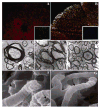
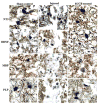
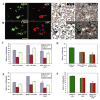
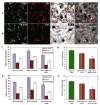
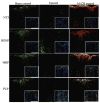


Similar articles
-
The use of hemopoietic stem cells derived from human umbilical cord blood to promote restoration of spinal cord tissue and recovery of hindlimb function in adult rats.J Neurosurg Spine. 2006 Nov;5(5):424-33. doi: 10.3171/spi.2006.5.5.424. J Neurosurg Spine. 2006. PMID: 17120892
-
Functional recovery in traumatic spinal cord injury after transplantation of multineurotrophin-expressing glial-restricted precursor cells.J Neurosci. 2005 Jul 27;25(30):6947-57. doi: 10.1523/JNEUROSCI.1065-05.2005. J Neurosci. 2005. PMID: 16049170 Free PMC article.
-
Schwann cell-like remyelination following transplantation of human umbilical cord blood (hUCB)-derived mesenchymal stem cells in dogs with acute spinal cord injury.J Neurol Sci. 2011 Jan 15;300(1-2):86-96. doi: 10.1016/j.jns.2010.09.025. Epub 2010 Nov 10. J Neurol Sci. 2011. PMID: 21071039
-
Promoting axonal myelination for improving neurological recovery in spinal cord injury.J Neurotrauma. 2009 Oct;26(10):1847-56. doi: 10.1089/neu.2008.0551. J Neurotrauma. 2009. PMID: 19785544 Review.
-
Microenvironmental regulation of oligodendrocyte replacement and remyelination in spinal cord injury.J Physiol. 2016 Jul 1;594(13):3539-52. doi: 10.1113/JP270895. Epub 2016 Mar 29. J Physiol. 2016. PMID: 26857216 Free PMC article. Review.
Cited by
-
Early intervention for spinal cord injury with human induced pluripotent stem cells oligodendrocyte progenitors.PLoS One. 2015 Jan 30;10(1):e0116933. doi: 10.1371/journal.pone.0116933. eCollection 2015. PLoS One. 2015. PMID: 25635918 Free PMC article.
-
Stem cell treatment after cerebral ischemia regulates the gene expression of apoptotic molecules.Neurochem Res. 2014 Aug;39(8):1511-21. doi: 10.1007/s11064-014-1341-z. Epub 2014 May 31. Neurochem Res. 2014. PMID: 24879430
-
Coadministration of Dexamethasone and Melissa officinalis Has Neuroprotective Effects in Rat Animal Model with Spinal Cord Injury.Cell J. 2017 Apr-Jun;19(1):102-116. doi: 10.22074/cellj.2016.4868. Epub 2016 Dec 21. Cell J. 2017. PMID: 28367421 Free PMC article.
-
Percutaneous transplantation of human umbilical cord-derived mesenchymal stem cells in a dog suspected to have fibrocartilaginous embolic myelopathy.J Vet Sci. 2013;14(4):495-7. doi: 10.4142/jvs.2013.14.4.495. Epub 2013 Jun 28. J Vet Sci. 2013. PMID: 23820160 Free PMC article.
-
Assessment of Neuroprotective Properties of Melissa officinalis in Combination With Human Umbilical Cord Blood Stem Cells After Spinal Cord Injury.ASN Neuro. 2016 Nov 3;8(6):1759091416674833. doi: 10.1177/1759091416674833. Print 2016 Oct. ASN Neuro. 2016. PMID: 27815336 Free PMC article.
References
-
- BALENTINE JD. Pathology of experimental spinal cord trauma II. Ultrastructure of axons and myelin. Lab Investigation. 1978;39:254–266. - PubMed
-
- BAMBAKIDIS NC, MILLER RH. Transplantation of oligodendrocyte precursors and sonic hedgehog results in improved function and white matter sparing in the spinal cords of adult rats after contusion. Spine J. 2004;4:16–26. - PubMed
-
- BANIK NL, POWERS JM, HOGAN EL. The effects of spinal cord trauma on myelin. J Neuropathol Exp Neurol. 1980;39:232–244. - PubMed
-
- BARRES BA, RAFF MC. Control of oligodendrocyte number in the developing rat optic nerve. Neuron. 1994a;12:935–942. - PubMed
-
- BARRES BA, RAFF MC, GAESE F, BARTKE I, DECHANT G, BARDE YA. A crucial role for neurotrophin-3 in oligodendrocyte development. Nature. 1994b;367:371–375. - PubMed
Publication types
MeSH terms
Substances
Grants and funding
LinkOut - more resources
Full Text Sources
Other Literature Sources
Medical
Research Materials
Miscellaneous

